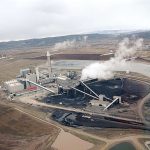Pitkin County ranchers speak out following recent wolf depredation
Aspen Times

Bailey Heic/Courtesy Photo
Ranchers in Pitkin County are calling on the public to recognize the real-world consequences of wolf reintroduction, following the first confirmed livestock kill by wolves in the Roaring Fork Valley.
Ginny Harrington, who ranches with her husband, Tom, near Carbondale, said the incident has been downplayed in recent media coverage, which she believes fails to reflect the actual toll on ranchers.
“I’m disappointed the same old statistics were thrown out there again,” she said, referring to the frequently cited national figure that wolves account for just 3.6% of cattle losses due to predators. “It dismisses the real loss and challenges ranchers face each day and the impact these losses can have on the entire community.”
Harrington argues that national averages distort the on-the-ground experience, especially in areas like the Roaring Fork Valley where the presence of wolves is now a reality.
She points out that the statistics often include regions with no wolves at all.
“You can’t have a wolf depredation in areas where there are no wolves,” she said.
Instead, she urges a more localized look at data from counties like Grand and Jackson, where wolf populations are already established and where the consequences for ranchers are better documented.
While not every producer will face a direct loss, the impact on those who do is profound.
“To those that are, it creates challenges and heartbreak,” she said.
She acknowledges that cattle die for many reasons — illness, birthing complications, or other predators — but says wolves add a uniquely difficult and intensifying layer. The stress wolves cause can ripple across an entire herd, disrupting operations even when no animals are killed.

The Colorado Wolf Management Plan, a mitigation effort created by Colorado Parks and Wildlife, accounts for these ripple effects by offering compensation not only for confirmed kills, but also for “indirect losses” — including decreased pregnancy rates and lower weaning weights due to the stress of nearby predators.
Not all losses, however, are accounted for. In the high-elevation ranchlands of the Roaring Fork Valley, cattle have been selectively bred and tested over decades to survive the thin air and avoid brisket disease, a fatal condition linked to high-altitude pulmonary hypertension.
“If you have a wolf depredation, you have lost out on genetics that you have developed over decades,” Harrington said. “You’ve lost the years of potential production and all the costs that went into ensuring your cattle can handle high-elevation.”
Wolves have also forced ranchers to change how they use their land — despite state policy that suggests grazing patterns shouldn’t be affected.
“Wolves on the landscape can change where, when, and how ranchers can graze their livestock,” she said, especially near den or rendezvous sites.
Underlying these concerns is a deeper ethic of stewardship. She emphasizes that ranchers don’t just care for cattle; they manage land that supports entire ecosystems.
“Our greater goal is to provide food for our communities and beyond,” she said.
Much of that rangeland, she added, is best suited for grazing, offering a mosaic of benefits including habitat for wildlife, healthy wetlands, and resilient ecosystems.
Frank Taylor, a retired Nebraska rancher and former owner of Spring Valley Ranch and Cattle who now practices law in Aspen, said he never had to contend with wolves in Nebraska, but coyotes were a constant threat.
“We didn’t have wolves in our area; we had coyotes. When we called, we checked our cows and their calves every two hours to make sure the coyotes didn’t get them,” Taylor said. “If the coyotes did, they would do untold damage to the calves. Wolves will do the same thing, just on a wider basis.”
He’s concerned that the unintended consequences of reintroduction will be devastating for both predator and prey.
“The problem with wolves and coyotes is that they will attack when humans are not around,” he said. “I fear both predators and prey will be harmed by this reintroduction. We’ll end up with dead wolves and cattle severely depredated. This reintroduction has the potential to be a lose-lose across the board.”

For ranchers already navigating drought, market instability, and development pressure, wolf predation adds another unpredictable burden. Harrington fears that some operations won’t survive — and with them, the land-use benefits they provide.
“Open space, scenic viewsheds, wildlife corridors, wetlands, water filtration, fire mitigation, local food, and much more will be gone if the ranchers can no longer afford to operate in the Roaring Fork Valley,” she said.
What’s at stake, she argues, is more than livestock — it’s the very character and sustainability of rural Colorado.
“Without active working lands, our communities would be woefully lacking and potentially just a place where we grow houses and playgrounds for ever-increasing recreation,” she said. “We would push wildlife and agriculture, our local food and fiber production, onto ever-decreasing patches of small acreage like islands in an ever-increasing sea of development.”
Both Harrington and Taylor hope that decision-makers will start listening to those on the front lines rather than relying on what they argue are broad statistics that fail to capture the complexity and cost of wolf reintroduction for ranching communities.

Support Local Journalism

Support Local Journalism
Readers around Steamboat and Routt County make the Steamboat Pilot & Today’s work possible. Your financial contribution supports our efforts to deliver quality, locally relevant journalism.
Now more than ever, your support is critical to help us keep our community informed about the evolving coronavirus pandemic and the impact it is having locally. Every contribution, however large or small, will make a difference.
Each donation will be used exclusively for the development and creation of increased news coverage.









